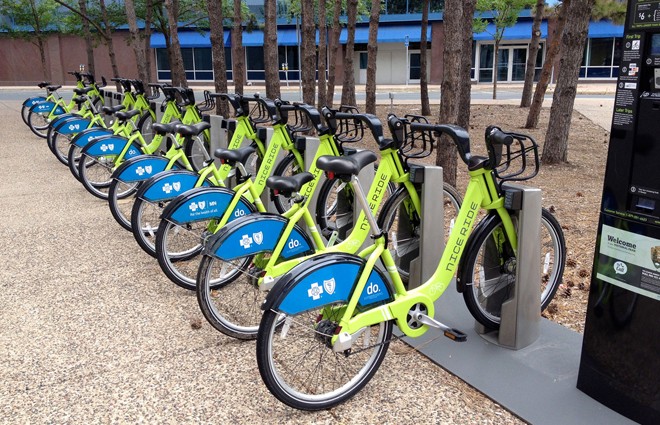https://github.com/tushar365/bike-sharing-rental-prediction
Predict Bike🚲 Rentals with Weather! This project uses regression to predict hourly bike rentals by combining historical usage data with weather information. It helps bike-sharing companies optimize resources and improve user experience.
https://github.com/tushar365/bike-sharing-rental-prediction
data-science decision-trees knn-regression linear-regression machine-learning matplotlib-pyplot numpy pandas seaborn
Last synced: 9 days ago
JSON representation
Predict Bike🚲 Rentals with Weather! This project uses regression to predict hourly bike rentals by combining historical usage data with weather information. It helps bike-sharing companies optimize resources and improve user experience.
- Host: GitHub
- URL: https://github.com/tushar365/bike-sharing-rental-prediction
- Owner: Tushar365
- Created: 2023-01-20T14:14:07.000Z (almost 3 years ago)
- Default Branch: main
- Last Pushed: 2024-05-05T15:34:08.000Z (over 1 year ago)
- Last Synced: 2025-10-09T08:05:13.873Z (24 days ago)
- Topics: data-science, decision-trees, knn-regression, linear-regression, machine-learning, matplotlib-pyplot, numpy, pandas, seaborn
- Language: Jupyter Notebook
- Homepage:
- Size: 2.15 MB
- Stars: 2
- Watchers: 1
- Forks: 0
- Open Issues: 0
-
Metadata Files:
- Readme: README.md
Awesome Lists containing this project
README
Bike-Sharing Rental Prediction with Regression🚲🚲
This repository predicts hourly bike rental demand by combining historical usage patterns with weather data.

Project Goal:
The goal is to develop a regression model that accurately forecasts the number of bikes rented for a given hour.
This information can be valuable for bike-sharing companies to:
Optimize bike distribution across stations
Manage staffing levels
Improve user experience by ensuring bike availability
Data
🚲This project utilizes two datasets:
🚲Historical Bike Rental Data:
This data likely includes information like:
Timestamp (hourly)
Number of rentals
User type (registered/casual)
Day of week
Season
🚲Weather Data:
This data might contain:
Temperature
Feels-like temperature
Humidity
Wind speed
Weather condition (categorical)
Note: The specific data format and variables might differ depending on the source.
🚲Methodology
This project employs regression analysis to build a model that maps historical usage patterns and weather data to hourly bike rental demand. Here's a potential workflow:
Data Loading and Cleaning: Load both datasets, handle missing values, and address any inconsistencies.
Feature Engineering: Create new features if necessary (e.g., combining temperature and wind speed into a "wind chill" factor).
Model Building: Train a regression model (e.g., Linear Regression, Random Forest) on the combined dataset.
Model Evaluation: Evaluate the model's performance using metrics like Mean Squared Error (MSE) or R-squared on a separate test set.
Model Tuning (Optional): Fine-tune the model's hyperparameters to improve prediction accuracy.
Running the Code
This section should detail the steps to set up the project and run the code. It might involve:
Installing required libraries (e.g., pandas, scikit-learn)
Specifying the data location
Running scripts for data pre-processing, model training, and evaluation
Note: Specific instructions will depend on the chosen implementation.
Further Exploration
Model Selection: Compare the performance of different regression models.
Feature Importance: Analyze which features contribute most to the model's predictions.
Seasonality: Account for seasonal variations in bike rental demand.
Real-Time Integration: Integrate the model into a system that consumes real-time weather data for continuous predictions.
Additional Information
The readme can include:
Authors and contributors
License information
References to relevant datasets or weather data sources
This readme provides a starting point for your bike-sharing rental prediction project using regression. Feel free to adapt it based on your specific data and chosen approach.